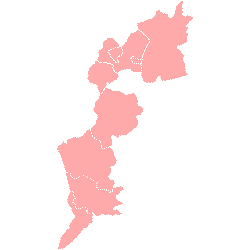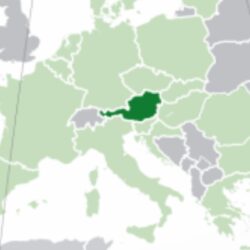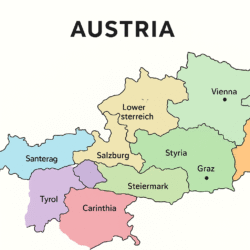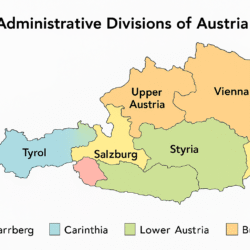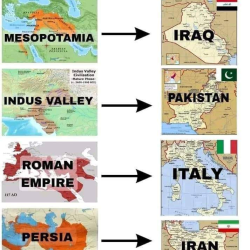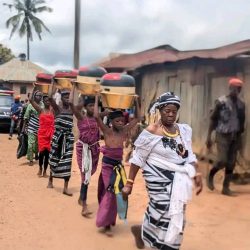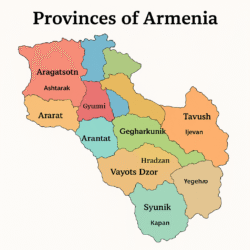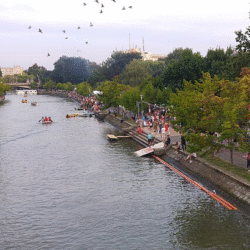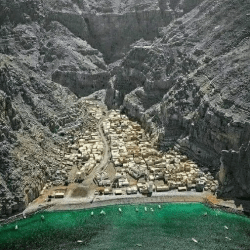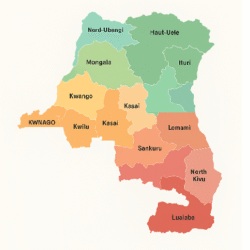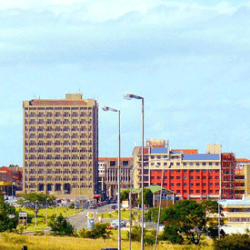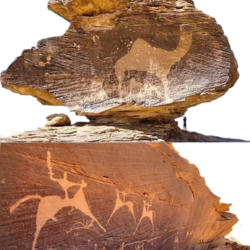Discover the rich history and etymology of Burgenland, Austria’s easternmost province. Learn how this multilingual borderland evolved from Deutsch-Westungarn into modern Burgenland, blending German, Hungarian, and Slavic cultures.
Nestled between Austria and Hungary, Burgenland is a region that beautifully mirrors Central Europe’s layered history. Today, it’s celebrated for its rolling vineyards, tranquil lakes, and vibrant multicultural traditions. But behind its peaceful façade lies a fascinating story of shifting borders, evolving identities, and linguistic diversity.
Before it became an Austrian province in 1921, Burgenland wasn’t a defined territorial entity. Instead, it formed part of the western edge of the Kingdom of Hungary, home to a patchwork of German-speaking, Hungarian, Croatian, and Slovene communities. This unique blend has deeply shaped Burgenland’s culture, dialects, and even its very name.
Burgenland Before 1921: A Land Without Borders
Until the end of World War I, the area now known as Burgenland had no unified political status. It was administratively divided among four Hungarian counties, or vármegyék: Pozsony (Pressburg/Bratislava), Moson (Wieselburg), Sopron (Ödenburg), and Vas (Eisenburg).
The region was informally referred to as Deutsch-Westungarn — literally “German West Hungary.” This name reflected the fact that many of its residents spoke German, even though they were subjects of the Hungarian crown. This borderland became a cultural bridge between Austrian-German, Magyar-Hungarian, and Slavic worlds.
After World War I and the collapse of the Austro-Hungarian Empire, the Treaty of Saint-Germain (1919) and the Treaty of Trianon (1920) redrew Central Europe’s map. Most of Deutsch-Westungarn was ceded to Austria in 1921, forming the province we now call Burgenland.
The Birth of the Name “Burgenland”
The name Burgenland emerged during the postwar discussions of 1919, thanks to a Viennese resident of Sopron named Odo Rötig. He coined the term “Vierburgenland”, or “Land of Four Castles,” referencing the four counties — Pressburg, Wieselburg, Ödenburg, and Eisenburg — from which the new region would be drawn.
However, when Bratislava (Pressburg) was assigned to Czechoslovakia, the “Vier” (“four”) no longer applied. Some proposed renaming it “Dreiburgenland” (“Land of Three Castles”), but that too became inaccurate since none of the original castles actually lay within the new province’s borders. Ultimately, the number was dropped, and the simpler term Burgenland — “Land of Castles” — was officially adopted by the first Landtag (provincial assembly) in 1922.
The name resonated with Austria’s cultural imagination, evoking its medieval castles and frontier history — even if no specific castles from the original name remained within its boundaries.
Multilingual Names Across Neighboring Cultures
Burgenland’s cultural richness is mirrored in its many names across languages, each reflecting a unique linguistic lens. Here’s how neighboring peoples know the region:
| Language | Name | Meaning / Origin |
|---|---|---|
| German | Burgenland | “Land of Castles” |
| Hungarian | Őrvidék, Felsőőrvidék, Várvidék | “Guard Region,” “Upper Guard Region,” or “Castle Region” |
| Slovak | Hradsko | From hrad meaning “castle” |
| Croatian | Gradišće | Derived from grad, meaning “town” or “fortress” |
| Slovene | Gradiščanska | Linguistic calque of the German name |
| Serbo-Croatian (historical) | Luzic or Lusic | Older name for the western Neusiedler See area |
The Hungarian term Őrvidék (“Guardland”) emphasizes the area’s historical role as a frontier defense zone of medieval Hungary. In the 1970s, historian László Juhász popularized Várvidék (“Castle Region”), a direct translation of the German Burgenland, now favored in tourism and cultural publications.
Croatian and Slovene speakers, meanwhile, developed Gradišće and Gradiščanska as calques — translated forms capturing the “castle” element of the original name. These versions highlight how deeply intertwined language and geography remain in Central Europe.
Ethnic and Cultural Layers of Burgenland
For centuries, Burgenland was a living mosaic of ethnicities. Alongside Germans and Hungarians lived Croats, Slovenes, Czechs, Slovaks, Serbs, and even Bosniaks. Many of these groups arrived during the Ottoman Wars, when Christian refugees fled northward and resettled in the Habsburg lands.
Over time, assimilation and Magyarization — the Hungarian government’s policy of cultural unification — blended these communities into predominantly German or Hungarian populations. Still, Burgenland retains a strong Croatian and Hungarian minority, officially recognized in Austria today.
The region’s easternmost area, bordering Hungary and Slovakia, is known as the Seewinkel, literally “corner of the lake.” This flat, sun-drenched area near the Neusiedler See remains one of Austria’s most linguistically and culturally mixed regions.
The Modern Identity of Burgenland
Today, Burgenland stands as Austria’s youngest province and its gateway to Eastern Europe. Its dual heritage — Austrian and Hungarian — gives it a character distinct from other Austrian states. The region proudly celebrates its multilingual history, and bilingual signage in German, Hungarian, and Croatian remains a visible symbol of coexistence.
Tourism thrives on this cultural blend: from the vineyards of Rust to the festivals of Eisenstadt and the wetlands of Seewinkel, Burgenland offers a rich intersection of nature, history, and identity.
FAQs about Burgenland
1. When did Burgenland become part of Austria?
Burgenland officially joined Austria in 1921, following the treaties of Saint-Germain and Trianon after World War I.
2. Why is it called Burgenland?
The name comes from the German word Burg (castle). Initially, “Vierburgenland” referred to four Hungarian counties; it was later shortened to “Burgenland.”
3. What languages are spoken in Burgenland today?
Primarily German, but Hungarian and Croatian minorities maintain their languages, especially in southern communities.
4. What is the Hungarian name for Burgenland?
The traditional term is Őrvidék (“Guard Region”), while Várvidék (“Castle Region”) is a modern alternative.
5. Was Burgenland always part of Austria?
No, before 1921 it belonged to the Kingdom of Hungary as part of Deutsch-Westungarn.
6. What makes Burgenland unique in Austria?
Its multicultural heritage, bilingual traditions, and position as a bridge between Central and Eastern Europe make it unlike any other Austrian province.
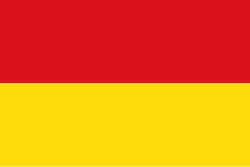
The story of Burgenland is one of transformation — from a nameless borderland of empires to a vibrant Austrian province that celebrates its multicultural legacy. Its many names — Burgenland, Őrvidék, Gradišće, Hradsko — tell the tale of a region where languages and histories intertwine.
In Burgenland, every castle ruin, vineyard, and village name whispers of centuries of coexistence. It stands as a living example of Europe’s rich cultural tapestry — a land where borders changed, but heritage endured.
